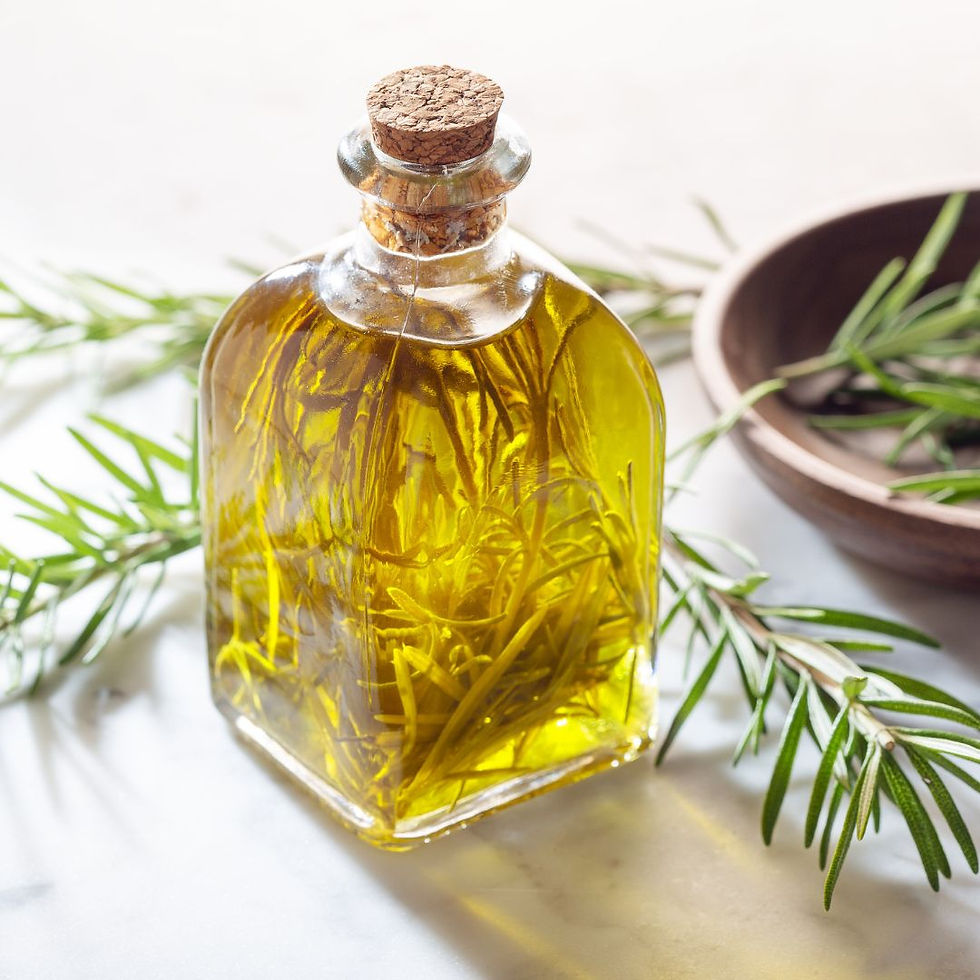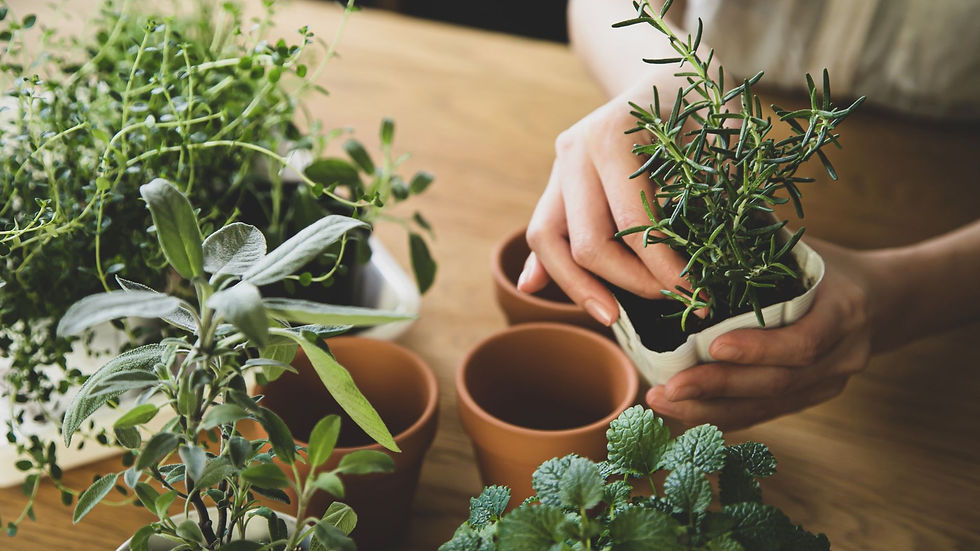More Than Just a Spice: The Healing Science of Rosemary
- Millawanda Urban Farming
- Jul 21
- 3 min read
Salvia rosmarinus (formerly Rosmarinus officinalis), commonly known as rosemary, is a perennial, evergreen herb of the Lamiaceae family indigenous to the Mediterranean basin. Over centuries, it has garnered attention not only for its distinctive aroma and culinary versatility but also for an expanding array of pharmacological and cosmetic applications.
With needle-like leaves and a strong, slightly bitter aroma, rosemary has been cherished since ancient times. The name comes from the Latin ros marinus, meaning "dew of the sea"—a poetic nod to how it thrives on sun-drenched coastlines.

Used by the ancient Greeks and Romans for everything from medicine to rituals, rosemary has long been associated with memory and fidelity. Students in ancient Greece reportedly wore rosemary wreaths during exams, and brides carried it as a symbol of love and loyalty.
Phytochemical Profile
Rosemary’s therapeutic potential is largely attributed to its rich complement of polyphenolic compounds and volatile terpenes. Key constituents include:
Carnosic acid and carnosol: Potent diterpenes with demonstrated antioxidant and anti‑inflammatory activities.
Rosmarinic acid: A caffeic acid ester known for scavenging free radicals.
1,8‑Cineole, α‑pinene, camphor: Major volatile constituents in the essential oil fraction, contributing to antimicrobial and cognitive‑modulating effects..
Culinary Applications
Rosemary imparts a characteristic resinous flavor to a wide range of dishes. Common culinary uses include:
Meat and poultry rubs: The essential oil aids in flavor penetration and may reduce lipid oxidation during cooking.
Vegetable roasting: Enhances sensory qualities and may improve shelf life by inhibiting microbial spoilage.
Infused oils and vinegars: Concentrated phenolics enrich dressings, providing both taste and a mild preservative effect.
Herbal teas and broths: Decoctions leverage water‑soluble polyphenols for a subtle, restorative infusion.
Medicinal and Nutraceutical Benefits
A growing body of in vitro and in vivo research has elucidated several health‑promoting properties of rosemary:
Cognitive Enhancement
Aromatherapeutic inhalation of rosemary essential oil has been linked to transient improvements in alertness and memory performance, potentially through modulation of cholinesterase activity and cerebral blood flow.

Antioxidant and Anti‑inflammatory Action
Carnosic acid and rosmarinic acid exhibit significant free‑radical scavenging, reducing lipid peroxidation in cellular models. These compounds also downregulate pro-inflammatory mediators (e.g., COX-2, TNF-α), suggesting their utility in chronic inflammatory conditions.
Antimicrobial Effects
Rosemary essential oil demonstrates broad‑spectrum antimicrobial activity against Gram‑positive and Gram‑negative bacteria, as well as select fungal pathogens, via disruption of microbial cell membranes.
Metabolic Regulation
Preliminary studies indicate that rosemary extracts may exert hypoglycemic effects by enhancing insulin sensitivity and modulating key enzymes in carbohydrate metabolism.
Cosmetic and Topical Uses
Anti‑aging and photoprotective formulations: Its antioxidant activity mitigates UV‑induced oxidative damage in skin cells.
Hair care products: Topical application of rosemary oil promotes microcirculation in the scalp and has been associated with reduced hair loss.
Anti‑acne preparations: Antimicrobial and sebum‑regulating properties help control Propionibacterium acnes proliferation.
Cultivation and Harvesting
One of the most delightful aspects of rosemary is how incredibly easy it is to grow even if you’re new to gardening or working with limited space. Whether it’s basking on a sunny balcony, thriving in a windowsill pot, or spreading its woody branches in a backyard bed, rosemary rewards even modest care with year-round greenery and a scent that stirs the senses.
By growing rosemary in your garden, you would also repel ticks.

Climate: Needs full sun exposure with minimal frost.
Soil: It prefers well-drained, sandy or loamy soil, ideally with a slightly alkaline pH.
Irrigation: It is remarkably drought-tolerant, making it perfect for gardeners who prefer plants that don’t require daily attention. Moderate watering; drought stress increases certain phenolic concentrations but excessive dryness may impair growth.
Harvesting: Gently pinch or snip a few sprigs whenever you need them. Not only does this provide fresh herbs for your kitchen, but it also encourages bushier, healthier growth. For the highest concentration of essential oils—ideal if you’re drying rosemary or making infused oils—harvest in the late morning, after the dew has evaporated but before the heat of the day.



Comments